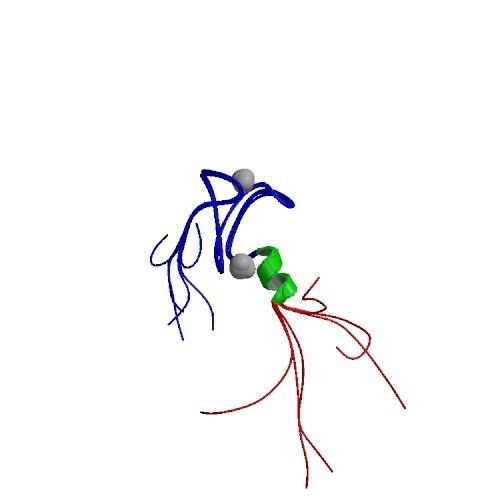Entrez 326 | Ensembl ENSG00000160224 | |
 | ||
Aliases AIRE, AIRE1, APECED, APS1, APSI, PGA1, autoimmune regulator External IDs OMIM: 607358 MGI: 1338803 HomoloGene: 327 GeneCards: AIRE | ||
The autoimmune regulator (AIRE) is a protein that in humans is encoded by the AIRE gene. AIRE is a transcription factor expressed in the medulla (inner part) of the thymus and controls a mechanism that prevents the immune system from attacking the body.
Contents
Each T cell recognizes a specific antigen when it is presented in complex with a MHC molecule by an antigen presenting cell. This recognition is accomplished by the T cell receptors expressed on the cell surface. T cells receptors are generated by randomly shuffled gene segments which results in a highly diverse population of T cells - each with a unique antigen specificity. Subsequently, T cells with receptors that recognize the body's own proteins need to be eliminated while still in the thymus. Through the action of AIRE, medullary thymic epithelial cells (mTEC) express major proteins from elsewhere in the body (so called "tissue-restricted antigens" - TRA) and T cells that respond to those proteins are eliminated through cell death (apoptosis). Thus AIRE drives negative selection of self-recognizing T cells. When AIRE is defective, T cells that recognize antigens normally produced by the body can exit the thymus and enter circulation. This can result in a variety of autoimmune diseases.
Function
In the thymus, the AIRE causes transcription of a wide selection of organ-specific genes that create proteins that are usually only expressed in peripheral tissues, creating an "immunological self-shadow" in the thymus. It is important that self-reactive T cells that bind strongly to self-antigen are eliminated in the thymus (via the process of negative selection), otherwise they may later encounter and bind to their corresponding self-antigens and initiate an autoimmune reaction. So the expression of non-local proteins by AIRE in the thymus reduces the threat of autoimmunity by promoting the elimination of auto-reactive T cells that bind antigens not normally found in the thymus. Furthermore, it has been found that AIRE is expressed in a population of stromal cells located in secondary lymphoid tissues, however these cells appear to express a distinct set of TRAs compared to mTECs
Research in knockout mice has demonstrated that AIRE functions through initiating the transcription of a diverse set of self-antigens, such as insulin, in the thymus. This expression then allows maturing thymocytes to become tolerant towards peripheral organs, thereby suppressing autoimmune disease.
The AIRE gene is expressed in many other tissues as well. AIRE gene is also expressed in the 33D1+ subset of dendritic cells in mouse and in human dendritic cells.
Pathology
The AIRE gene is mutated in the rare autoimmune syndrome Autoimmune Polyendocrinopathy Syndrome type 1 (APS-1), also known as Autoimmune Polyendocrinopathy-Candidiasis-Ectodermal Dystrophy (APECED). Disruption of AIRE results in the development of a range of autoimmune diseases, the most common clinical conditions in the syndrome are hypoparathyroidism, primary adrenocortical failure and chronic mucocutaneous candidiasis.
A gene knockout of the murine homolog of Aire has created a transgenic mouse model that is used to study the mechanism of disease in human patients.
Interactions
Autoimmune regulator has been shown to interact with CREB binding protein.
